-

Jun
16
Interpretive Summary: ASAS-NANP symposium: mathematical modeling in animal nutrition: the progression of data analytics and artificial intelligence in support of sustainable development in animal science

Data analytics have evolved remarkably. This paper discussed the evolution of data analytics from a competitive advantage perspective within academia and illustrated the combination of different advanced technological systems in developing hybrid intelligent mechanistic models (HIMM).
Read more
-

Jun
16
Interpretive Summary: Genetic relationships between efficiency traits and gut microbiota traits in growing pigs being fed with a conventional or a high-fiber diet
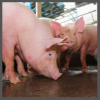
The link between the composition of the gut microbiota, i.e the composition of microorganisms in the gut, in pigs and their feed efficiency, i.e. their ability to utilize nutrients, as well as their ability to digest were studied from a genetic point of view.
Read more
-

Jun
16
Interpretive Summary: Model definition for genetic evaluation of purebred and crossbred lambs including heterosis
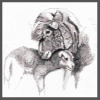
Crossbreeding is common in commercial sheep enterprises. It allows breeds with different attributes to be combined to generate crossbred progeny tailored to production environments and customer preferences.
Read more
-

Jun
16
Interpretive Summary: Effects of management strategies during early lactation and weaning on etiological agents of ovine subclinical mastitis and antimicrobial susceptibility of milk-derived bacterial isolates
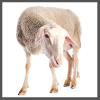
The objectives of this study were to quantify the prevalence of subclinical mastitis, evaluate the impact of bedding treatments on subclinical mastitis, evaluate the efficacy of weaning treatments, and identify levels of antimicrobial resistance in milk-derived bacteria.
Read more
-

Jun
16
Interpretive Summary: Evaluation of lipid sources and emulsifier addition on fat digestion of yellow-feathered broilers
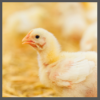
Considering that commercial diets generally contain 3% to 8% added lipids to provide up to 20% metabolizable energy (ME) in broiler diets, the addition of emulsifier in diets was believed to improve the digestibility of fat.
Read more
-

Jun
16
Interpretive Summary: Effects of dietary vitamin E and fat supplementation in growing-finishing swine fed to a heavy slaughter weight of 150 kg: II. Tissue fatty acid profile, vitamin E concentrations, and antioxidant capacity of plasma and tissue
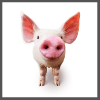
The study evaluated vitamin E (VE) supplementation and fat source on fatty acid (FA) composition and VE concentrations in pigs. Three fat sources with distinctive fatty acid profiles were used; VE levels were 11 (the requirement estimate) and 200 (a high level to assure any responses could be seen) ppm.
Read more
-

Jun
16
Interpretive Summary: Effect of limestone solubility on mineral digestibility and bone ash in nursery pigs fed diets containing graded level of inorganic phosphorus or increasing dose of a novel consensus bacterial 6-phytase variant
.png?sfvrsn=d3774dd1_0)
Microbial phytase is added to commercial pig diets to increase phosphorus (P) availability and reduce P excretion. It is known that an excess of calcium (Ca), mostly sourced from limestone, can affect phytase efficacy.
Read more
-

Jun
16
Interpretive Summary: Evaluation of essential fatty acids in lactating sow diets on sow reproductive performance, colostrum and milk composition, and piglet survivability
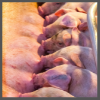
Supplemental fat sources are an effective and widely accepted strategy to increase energy density of sow lactation diets that can also provide essential fatty acids such as linoleic acid (LA) and α-linolenic acid (ALA). Currently, the effects of supplemental LA and ALA provided shortly before farrowing on colostrum and milk composition are not fully understood.
Read more
-

Jun
16
Interpretive Summary: Short Communication: Influence of estrus activity and reproductive tract size and position scores on fertility in Bos indicus and Bos taurus suckled beef cows
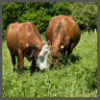
The livelihood of a cow-calf producer relies on reproductively sound cattle that give birth to live offspring once a year. Two factors, pregnancy rate and pregnancy loss, are informative measures of fertility.
Read more
-

Jun
09
Interpretive Summary: VTag: a semi-supervised pipeline for tracking pig activity with a single top-view camera
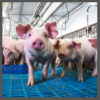
Collecting detailed measurements of animals through cameras has become an important focus with the rising demand for meat production in the swine industry.
Read more
-

Jun
09
Interpretive Summary: Effects of yeast-based pre- and probiotics in lactation diets of sows on litter performance and antimicrobial resistance of fecal Escherichia coli of sows
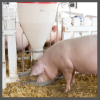
Feeding sows live yeast and yeast extracts from day 110 of gestation through lactation tended to increase lactation feed intake but did not affect any other sow or litter performance criteria.
Read more
-

Jun
09
Interpretive Summary: Influence of yeast-based pre- and probiotics in lactation and nursery diets on nursery pig performance and antimicrobial resistance of fecal Escherichia coli
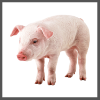
Feeding sows a diet containing live yeast and yeast extract from day 110 of gestation through weaning resulted in progeny that were heavier at weaning and had increased average daily gain and average daily feed intake throughout the nursery period.
Read more
-

Jun
09
Interpretive Summary: Potential effect of two Bacillus probiotic strains on performance and fecal microbiota of breeding sows and their piglets
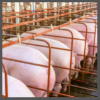
The aim of the present study was to determine if the inclusion of probiotic microorganisms in the mother’s diet during gestation and the lactation period is capable of modifying the performance of mothers and piglets and the possible effect on the intestinal health of piglets after separation from the mother.
Read more
-

Jun
09
Interpretive Summary: Cereal grain fiber composition modifies phosphorus digestibility in grower pigs
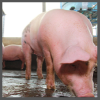
The study assessed effects of cereal grains varying in fermentable carbohydrates on non-phytate-P and phytate-P. Phytate is the major binding form of P in plant seed and is incompletely degraded.
Read more
-

Jun
09
Interpretive Summary: Influence of hempseed cake inclusion on growth performance, carcass characteristics, feeding behavior, and blood parameters in finishing heifers
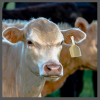
This experiment evaluated the effects of dietary inclusion of hempseed cake in comparison with dried corn distillers grains plus solubles (DDGS) on growth performance, feeding behavior, carcass characteristics, and blood parameters in finishing heifers.
Read more
-

Jun
09
Interpretive Summary: Corn processing, flake density, and starch retrogradation influence ruminal solubility of starch, fiber, protein, and minerals
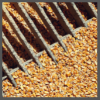
Grain processing has been used for decades to improve digestibility of finishing cattle diets, leading to improved growth performance and feed efficiency.
Read more
-

Jun
02
Interpretive Summary: Effect of maternal dietary starch-to-fat ratio and daily energy intake during late pregnancy on the performance and lipid metabolism of primiparous sows and newborn piglets
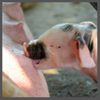
Given the growing concern regarding nutrition during gestation, the present study was designed to investigate the effects of energy on the reproductive performance and lipid metabolism of primiparous sows.
Read more
-

Jun
02
Interpretive Summary: Maternal immune activation and dietary soy isoflavone supplementation influence pig immune function but not muscle fiber formation
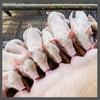
Gestational health challenges may influence growth performance and immunity of offspring pigs during postnatal life. In particular, porcine reproductive and respiratory syndrome virus (PRRSV) is endemic in the U.S. herd, but its effects on surviving offspring pigs are largely unknown.
Read more
-

Jun
02
Interpretive Summary: Effects of supplementation rate of an extruded dried distillers’ grains cube fed to growing heifers on voluntary intake and digestibility of bermudagrass hay

Growing cattle are oftentimes provided supplemental concentrate as a source of protein and energy in order to meet performance goals when consuming low-quality forages. The effects of supplemental concentrate on forage intake vary, which may be related to the quality of forage and the characteristics of the supplement being evaluated.
Read more
-

Jun
02
Interpretive Summary: Maternal nutrient restriction and over-feeding during gestation alter expression of key factors involved in placental development and vascularization
.png?sfvrsn=ca584dd1_0)
Too little or too much food during gestation can lead to poor growth and health of the resulting offspring. The placenta is an important source of nutrient supply for the fetus and poor maternal diet can impair placenta growth and function.
Read more
 JunInterpretive Summary: ASAS-NANP symposium: mathematical modeling in animal nutrition: the progression of data analytics and artificial intelligence in support of sustainable development in animal science
JunInterpretive Summary: ASAS-NANP symposium: mathematical modeling in animal nutrition: the progression of data analytics and artificial intelligence in support of sustainable development in animal science Data analytics have evolved remarkably. This paper discussed the evolution of data analytics from a competitive advantage perspective within academia and illustrated the combination of different advanced technological systems in developing hybrid intelligent mechanistic models (HIMM).
Data analytics have evolved remarkably. This paper discussed the evolution of data analytics from a competitive advantage perspective within academia and illustrated the combination of different advanced technological systems in developing hybrid intelligent mechanistic models (HIMM). JunInterpretive Summary: Genetic relationships between efficiency traits and gut microbiota traits in growing pigs being fed with a conventional or a high-fiber diet
JunInterpretive Summary: Genetic relationships between efficiency traits and gut microbiota traits in growing pigs being fed with a conventional or a high-fiber diet The link between the composition of the gut microbiota, i.e the composition of microorganisms in the gut, in pigs and their feed efficiency, i.e. their ability to utilize nutrients, as well as their ability to digest were studied from a genetic point of view.
The link between the composition of the gut microbiota, i.e the composition of microorganisms in the gut, in pigs and their feed efficiency, i.e. their ability to utilize nutrients, as well as their ability to digest were studied from a genetic point of view. JunInterpretive Summary: Model definition for genetic evaluation of purebred and crossbred lambs including heterosis
JunInterpretive Summary: Model definition for genetic evaluation of purebred and crossbred lambs including heterosis Crossbreeding is common in commercial sheep enterprises. It allows breeds with different attributes to be combined to generate crossbred progeny tailored to production environments and customer preferences.
Crossbreeding is common in commercial sheep enterprises. It allows breeds with different attributes to be combined to generate crossbred progeny tailored to production environments and customer preferences. JunInterpretive Summary: Effects of management strategies during early lactation and weaning on etiological agents of ovine subclinical mastitis and antimicrobial susceptibility of milk-derived bacterial isolates
JunInterpretive Summary: Effects of management strategies during early lactation and weaning on etiological agents of ovine subclinical mastitis and antimicrobial susceptibility of milk-derived bacterial isolates The objectives of this study were to quantify the prevalence of subclinical mastitis, evaluate the impact of bedding treatments on subclinical mastitis, evaluate the efficacy of weaning treatments, and identify levels of antimicrobial resistance in milk-derived bacteria.
The objectives of this study were to quantify the prevalence of subclinical mastitis, evaluate the impact of bedding treatments on subclinical mastitis, evaluate the efficacy of weaning treatments, and identify levels of antimicrobial resistance in milk-derived bacteria. JunInterpretive Summary: Evaluation of lipid sources and emulsifier addition on fat digestion of yellow-feathered broilers
JunInterpretive Summary: Evaluation of lipid sources and emulsifier addition on fat digestion of yellow-feathered broilers Considering that commercial diets generally contain 3% to 8% added lipids to provide up to 20% metabolizable energy (ME) in broiler diets, the addition of emulsifier in diets was believed to improve the digestibility of fat.
Considering that commercial diets generally contain 3% to 8% added lipids to provide up to 20% metabolizable energy (ME) in broiler diets, the addition of emulsifier in diets was believed to improve the digestibility of fat. JunInterpretive Summary: Effects of dietary vitamin E and fat supplementation in growing-finishing swine fed to a heavy slaughter weight of 150 kg: II. Tissue fatty acid profile, vitamin E concentrations, and antioxidant capacity of plasma and tissue
JunInterpretive Summary: Effects of dietary vitamin E and fat supplementation in growing-finishing swine fed to a heavy slaughter weight of 150 kg: II. Tissue fatty acid profile, vitamin E concentrations, and antioxidant capacity of plasma and tissue The study evaluated vitamin E (VE) supplementation and fat source on fatty acid (FA) composition and VE concentrations in pigs. Three fat sources with distinctive fatty acid profiles were used; VE levels were 11 (the requirement estimate) and 200 (a high level to assure any responses could be seen) ppm.
The study evaluated vitamin E (VE) supplementation and fat source on fatty acid (FA) composition and VE concentrations in pigs. Three fat sources with distinctive fatty acid profiles were used; VE levels were 11 (the requirement estimate) and 200 (a high level to assure any responses could be seen) ppm. JunInterpretive Summary: Effect of limestone solubility on mineral digestibility and bone ash in nursery pigs fed diets containing graded level of inorganic phosphorus or increasing dose of a novel consensus bacterial 6-phytase variant
JunInterpretive Summary: Effect of limestone solubility on mineral digestibility and bone ash in nursery pigs fed diets containing graded level of inorganic phosphorus or increasing dose of a novel consensus bacterial 6-phytase variant.png?sfvrsn=d3774dd1_0) Microbial phytase is added to commercial pig diets to increase phosphorus (P) availability and reduce P excretion. It is known that an excess of calcium (Ca), mostly sourced from limestone, can affect phytase efficacy.
Microbial phytase is added to commercial pig diets to increase phosphorus (P) availability and reduce P excretion. It is known that an excess of calcium (Ca), mostly sourced from limestone, can affect phytase efficacy. JunInterpretive Summary: Evaluation of essential fatty acids in lactating sow diets on sow reproductive performance, colostrum and milk composition, and piglet survivability
JunInterpretive Summary: Evaluation of essential fatty acids in lactating sow diets on sow reproductive performance, colostrum and milk composition, and piglet survivability Supplemental fat sources are an effective and widely accepted strategy to increase energy density of sow lactation diets that can also provide essential fatty acids such as linoleic acid (LA) and α-linolenic acid (ALA). Currently, the effects of supplemental LA and ALA provided shortly before farrowing on colostrum and milk composition are not fully understood.
Supplemental fat sources are an effective and widely accepted strategy to increase energy density of sow lactation diets that can also provide essential fatty acids such as linoleic acid (LA) and α-linolenic acid (ALA). Currently, the effects of supplemental LA and ALA provided shortly before farrowing on colostrum and milk composition are not fully understood. JunInterpretive Summary: Short Communication: Influence of estrus activity and reproductive tract size and position scores on fertility in Bos indicus and Bos taurus suckled beef cows
JunInterpretive Summary: Short Communication: Influence of estrus activity and reproductive tract size and position scores on fertility in Bos indicus and Bos taurus suckled beef cows The livelihood of a cow-calf producer relies on reproductively sound cattle that give birth to live offspring once a year. Two factors, pregnancy rate and pregnancy loss, are informative measures of fertility.
The livelihood of a cow-calf producer relies on reproductively sound cattle that give birth to live offspring once a year. Two factors, pregnancy rate and pregnancy loss, are informative measures of fertility. JunInterpretive Summary: VTag: a semi-supervised pipeline for tracking pig activity with a single top-view camera
JunInterpretive Summary: VTag: a semi-supervised pipeline for tracking pig activity with a single top-view camera Collecting detailed measurements of animals through cameras has become an important focus with the rising demand for meat production in the swine industry.
Collecting detailed measurements of animals through cameras has become an important focus with the rising demand for meat production in the swine industry. JunInterpretive Summary: Effects of yeast-based pre- and probiotics in lactation diets of sows on litter performance and antimicrobial resistance of fecal Escherichia coli of sows
JunInterpretive Summary: Effects of yeast-based pre- and probiotics in lactation diets of sows on litter performance and antimicrobial resistance of fecal Escherichia coli of sows Feeding sows live yeast and yeast extracts from day 110 of gestation through lactation tended to increase lactation feed intake but did not affect any other sow or litter performance criteria.
Feeding sows live yeast and yeast extracts from day 110 of gestation through lactation tended to increase lactation feed intake but did not affect any other sow or litter performance criteria. JunInterpretive Summary: Influence of yeast-based pre- and probiotics in lactation and nursery diets on nursery pig performance and antimicrobial resistance of fecal Escherichia coli
JunInterpretive Summary: Influence of yeast-based pre- and probiotics in lactation and nursery diets on nursery pig performance and antimicrobial resistance of fecal Escherichia coli Feeding sows a diet containing live yeast and yeast extract from day 110 of gestation through weaning resulted in progeny that were heavier at weaning and had increased average daily gain and average daily feed intake throughout the nursery period.
Feeding sows a diet containing live yeast and yeast extract from day 110 of gestation through weaning resulted in progeny that were heavier at weaning and had increased average daily gain and average daily feed intake throughout the nursery period. JunInterpretive Summary: Potential effect of two Bacillus probiotic strains on performance and fecal microbiota of breeding sows and their piglets
JunInterpretive Summary: Potential effect of two Bacillus probiotic strains on performance and fecal microbiota of breeding sows and their piglets The aim of the present study was to determine if the inclusion of probiotic microorganisms in the mother’s diet during gestation and the lactation period is capable of modifying the performance of mothers and piglets and the possible effect on the intestinal health of piglets after separation from the mother.
The aim of the present study was to determine if the inclusion of probiotic microorganisms in the mother’s diet during gestation and the lactation period is capable of modifying the performance of mothers and piglets and the possible effect on the intestinal health of piglets after separation from the mother. JunInterpretive Summary: Cereal grain fiber composition modifies phosphorus digestibility in grower pigs
JunInterpretive Summary: Cereal grain fiber composition modifies phosphorus digestibility in grower pigs The study assessed effects of cereal grains varying in fermentable carbohydrates on non-phytate-P and phytate-P. Phytate is the major binding form of P in plant seed and is incompletely degraded.
The study assessed effects of cereal grains varying in fermentable carbohydrates on non-phytate-P and phytate-P. Phytate is the major binding form of P in plant seed and is incompletely degraded. JunInterpretive Summary: Influence of hempseed cake inclusion on growth performance, carcass characteristics, feeding behavior, and blood parameters in finishing heifers
JunInterpretive Summary: Influence of hempseed cake inclusion on growth performance, carcass characteristics, feeding behavior, and blood parameters in finishing heifers This experiment evaluated the effects of dietary inclusion of hempseed cake in comparison with dried corn distillers grains plus solubles (DDGS) on growth performance, feeding behavior, carcass characteristics, and blood parameters in finishing heifers.
This experiment evaluated the effects of dietary inclusion of hempseed cake in comparison with dried corn distillers grains plus solubles (DDGS) on growth performance, feeding behavior, carcass characteristics, and blood parameters in finishing heifers. JunInterpretive Summary: Corn processing, flake density, and starch retrogradation influence ruminal solubility of starch, fiber, protein, and minerals
JunInterpretive Summary: Corn processing, flake density, and starch retrogradation influence ruminal solubility of starch, fiber, protein, and minerals Grain processing has been used for decades to improve digestibility of finishing cattle diets, leading to improved growth performance and feed efficiency.
Grain processing has been used for decades to improve digestibility of finishing cattle diets, leading to improved growth performance and feed efficiency. JunInterpretive Summary: Effect of maternal dietary starch-to-fat ratio and daily energy intake during late pregnancy on the performance and lipid metabolism of primiparous sows and newborn piglets
JunInterpretive Summary: Effect of maternal dietary starch-to-fat ratio and daily energy intake during late pregnancy on the performance and lipid metabolism of primiparous sows and newborn piglets Given the growing concern regarding nutrition during gestation, the present study was designed to investigate the effects of energy on the reproductive performance and lipid metabolism of primiparous sows.
Given the growing concern regarding nutrition during gestation, the present study was designed to investigate the effects of energy on the reproductive performance and lipid metabolism of primiparous sows. JunInterpretive Summary: Maternal immune activation and dietary soy isoflavone supplementation influence pig immune function but not muscle fiber formation
JunInterpretive Summary: Maternal immune activation and dietary soy isoflavone supplementation influence pig immune function but not muscle fiber formation Gestational health challenges may influence growth performance and immunity of offspring pigs during postnatal life. In particular, porcine reproductive and respiratory syndrome virus (PRRSV) is endemic in the U.S. herd, but its effects on surviving offspring pigs are largely unknown.
Gestational health challenges may influence growth performance and immunity of offspring pigs during postnatal life. In particular, porcine reproductive and respiratory syndrome virus (PRRSV) is endemic in the U.S. herd, but its effects on surviving offspring pigs are largely unknown. JunInterpretive Summary: Effects of supplementation rate of an extruded dried distillers’ grains cube fed to growing heifers on voluntary intake and digestibility of bermudagrass hay
JunInterpretive Summary: Effects of supplementation rate of an extruded dried distillers’ grains cube fed to growing heifers on voluntary intake and digestibility of bermudagrass hay Growing cattle are oftentimes provided supplemental concentrate as a source of protein and energy in order to meet performance goals when consuming low-quality forages. The effects of supplemental concentrate on forage intake vary, which may be related to the quality of forage and the characteristics of the supplement being evaluated.
Growing cattle are oftentimes provided supplemental concentrate as a source of protein and energy in order to meet performance goals when consuming low-quality forages. The effects of supplemental concentrate on forage intake vary, which may be related to the quality of forage and the characteristics of the supplement being evaluated. JunInterpretive Summary: Maternal nutrient restriction and over-feeding during gestation alter expression of key factors involved in placental development and vascularization
JunInterpretive Summary: Maternal nutrient restriction and over-feeding during gestation alter expression of key factors involved in placental development and vascularization.png?sfvrsn=ca584dd1_0) Too little or too much food during gestation can lead to poor growth and health of the resulting offspring. The placenta is an important source of nutrient supply for the fetus and poor maternal diet can impair placenta growth and function.
Too little or too much food during gestation can lead to poor growth and health of the resulting offspring. The placenta is an important source of nutrient supply for the fetus and poor maternal diet can impair placenta growth and function.



